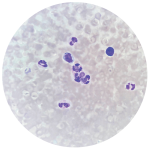
Nonnakrit / SHUTTERSTOCK.COM
SAN DIEGO—Treatment strategies for systemic lupus erythematosus (SLE) have changed a great deal over the years, but progress has been slow and inadequate. According to a 2011 survey, many patients with lupus still report that they have a low quality of life due to their health problems.1
Rheumatologists face the challenge to develop more successful therapeutic approaches and outcomes in these patients, said Ronald van Vollenhoven, MD, director of the Amsterdam Rheumatology and Immunology Center in The Netherlands. He shared the latest efforts by lupus researchers to shape a useful treat-to-target paradigm and definition of remission in SLE on Nov. 7 at the 2017 ACR/ARHP Annual Meeting.
New Biologic Option
Cyclophosphamide remains the pillar of treatment for severe lupus or lupus nephritis, but a low-dose protocol has now largely replaced the older, high-dose approach, he said.2 Belimumab, another lupus therapy approved in recent years, can be a safe, effective, steroid-sparing option for certain patients.3
Rheumatologists must still ask themselves if we are doing enough to improve the lives and long-term outcomes for lupus patients, he said. “Increasingly, we see that the most severe complications may be avoided for many of our patients. But something is still missing.”
According to the 2011 survey, which was conducted by a health economist in Sweden, lupus patients reported that they have a similar health-related quality of life as patients with late-stage chronic pulmonary obstructive disease (COPD) or cancer, said Dr. van Vollenhoven.
“This study reflects that some patients have a very poor quality of life. So our average result for treating lupus is still not very good. It is an expensive disease due to direct and indirect costs. How can we do better? One way is to develop better medications, and we always want that. But we can’t sit around and wait for that to happen.” Excitement reigns when new therapies emerge, but that enthusiasm can wane when treatments don’t prove as successful as we hoped, he said. “What we are trying to achieve is to use the existing therapies in a better way and to develop better strategies [for] how to use them.”
Refined Treatment Targets
Better outcomes may come from the development of a treat-to-target paradigm for SLE, he said. Treat-to-target approaches often follow this path: Identify a target for each patient to achieve, intervene with therapy, determine along with the patient when it is time to reassess the treatment plan, and then, if a target is not met, modify the intervention. The treat-to-target approach has been used in hypertension, a relatively simple condition to manage, and is widely used in the management of rheumatoid arthritis.4 Will it work in lupus, which is much more complex?
Three years ago, an international task force of rheumatologists released recommendations for a treat-to-target approach to lupus management.5 These include that the target should be remission of systemic symptoms and organ manifestations, or when that target cannot be attained, patients should be treated until they reach the lowest possible disease activity measurement. Prevention of lupus flares was another target recommended by the task force. They also recommended that clinically asymptomatic patients should not be escalated on therapy solely on disease activity or serological activity, he said.
“What happens in our practices is that if patients come in with their concerns, such as a new symptom, we address those things. We must think about long-term treatment goals and the targets to set. This can be challenging,” he said. There are no clear, universally accepted definitions for lupus remission. “That makes it hard for us to develop a target.”
‘Increasingly, we see that the most severe complications may be avoided for many of our patients. But something is still missing.’ —Ronald van Vollenhoven, MD
Defining Remission
Another international task force, including rheumatologists, nephrologists, dermatologists and SLE patients, the DORIS Project, was formed to help define remission in lupus.6 “For a patient to be in remission, the clinical disease activity has to be really low or absent. Whether serology has to be normal is a matter of some dispute,” he said. “But the lupus patient in remission today could still flare tomorrow.”
The task force recognized that in such diseases s RA, patients can be in remission and still be on treatment, “but in lupus, this is tricky. They could be on prednisone, and that’s not an ideal situation for the long term. So there is still a question about which treatments are acceptable during remission.”
The task force also considered that there are different measures of lupus disease activity, including SLEDAI, BILAG and ECLAM. Ideally, these should be zero in patients in remission, “but these instruments may have gaps,” so these tests should be supplemented with a physical global assessment, said Dr. van Vollenhoven. It is also unclear how long a patient needs to maintain zero disease activity to be considered in remission, he said.
Most SLE patients are not reaching remission according to the DORIS definitions, but more may be able to achieve the Lupus Low Disease Activity State (LLDAS) defined by Australian rheumatologists in 2016, he said.7
“This is a little more relaxed definition compared to the remission definition. You can have a SLEDAI of up to 4. So it’s not remission, but this is a pretty good state to be in if you have lupus. When we talk about treating to target in lupus, we need to ask what that target is. Maybe it is this low disease activity state.
“There is more work to be done, and we need more practical scoring both for clinical trials and clinical practice.”
Susan Bernstein is a freelance journalist based in Atlanta.
References
- Bexelius C, Wachtmeister K, Skare P, et al. Drivers of cost and health-related quality of life in patients with systemic lupus erythematosus (SLE): A Swedish nationwide study based on patient reports. Lupus. 2013 Jul;22(8):793–801.
- D’Cruz DP, Houssiau FA. The Euro-Lupus Nephritis Trial: The development of the sequential treatment protocol. Lupus. 2009 Sep;18(10):875–877.
- Furie R, Petri M, Zamani O, et al. A phase-III, randomized, placebo-controlled study of belimumab, a monoclonal antibody that inhibits B-lymphocyte stimulator, in patients with systemic lupus erythematosus. Arthritis Rheum. 2011 Dec;63(12):3918–3930.
- Smolen JS, Breedveid FC, Burmester GR, et al. Treating rheumatoid arthritis to target: 2014 update of the recommendations of an international task force. Ann Rheum Dis. 2016 Jan;75(1):3–15.
- Van Vollenhoven RF, Mosca M, Bertsias G, et al. Treat-to-target in systemic lupus erythematosus: Recommendations from an international task force. Ann Rheum Dis. 2014 Apr; 73(6):958–966.
- Van Vollenhoven RF, Voskuyl A, Bertsias G, et al. A framework for remission in SLE: Consensus findings from a large international task force on definitions of remission in SLE (DORIS). Ann Rheum Dis. 2017 Mar;76(3):554–561.
- Franklyn K, Lau CS, Navarra SV, et al. Definition and initial validation of a Lupus Low Disease Activity State (LLDAS). Ann Rheum Dis. 2016 Sep;75(9):1615–1621.

